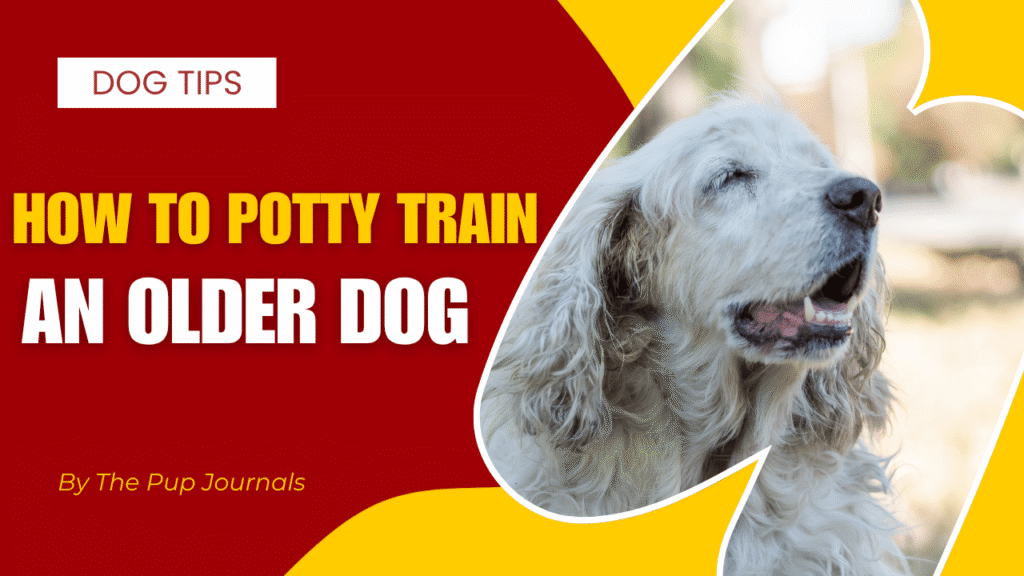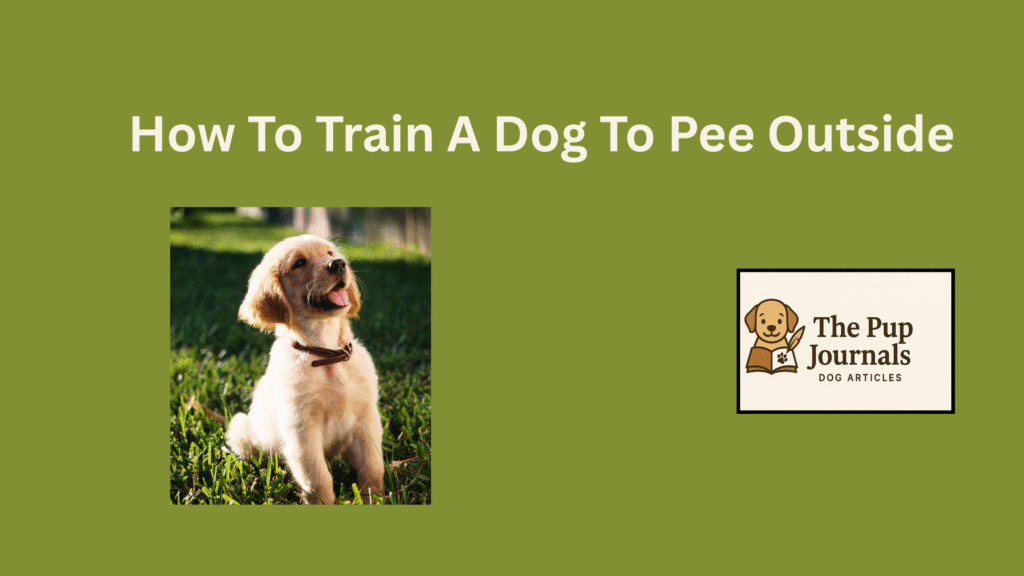
Introduction
Potty train an adult dog may seem difficult, but having a plan will go a long way. If you’re looking for a step-by-step guide with proven tips for potty training an older dog, keep reading. Even if your dog is new to your home or has some previous habits to break, you will find some easy-to-follow tips guide to establish good habits and keep your home mess-free!
Understanding Your Older Dog’s Needs
Older dogs can learn in various ways compared to puppies. Older dogs rely on rhythms and learned behavior. Some dogs have never lived inside a house. Others may have health problems that limit their ability (ie. weak bladder). Spend one day watching your dog for clues when they eat, drink, rest, or when they go to the door. This will help identify their potting habits. Once you understand your dog, their needs, then you will be better off in teaching them to potty outside.
Supplies You’ll Need
Gather these items before you begin:
- Leash & Collar: To guide your dog outside.
- Potty Pads: Handy in bad weather or for mobility issues.
- Enzyme Cleaner: Removes odors after accidents.
- Tasty Treats: Small rewards your dog loves.
With supplies ready, you create an environment that sets your dog up for success.
Establishing a Consistent Routine
Dogs thrive on predictability. Use the table below as a template. Adjust times to fit your schedule and your dog’s needs.
| Time of Day | Activity |
|---|---|
| 7:00 AM | Morning walk and potty break |
| 8:00 AM | Breakfast feeding |
| 10:00 AM | Quick outdoor potty check |
| 12:30 PM | Midday walk and potty break |
| 3:00 PM | Playtime and short outdoor break |
| 6:00 PM | Dinner feeding |
| 7:00 PM | Evening walk and potty break |
| 9:30 PM | Final outdoor potty before bedtime |
Use a clear command such as “go potty” every time you go out. Older dogs may require breaks every two-three hours. A steady routine allows them to associate going outside to potty time.
When Your Dog Has to Go?
You might also see pacing, whining, circling, deliberate sniffing, or leaving the room. These behaviors all say, “Take me out now!” Not every dog will signal, either through barking or scratching at a door. You can train these behaviors, but if you learn to spot the signs and respond promptly, your dog will likely recognize that you get him out right away, and he will begin “asking” as long as you respond quickly every time you see any of these behaviors.
Your dog may have some difficulty adjusting to eliminating on grass or dirt, because for example he has never eliminated on a surface other than concrete. Try taking him in the car, and going to a quiet park. If you have your own yard, try to get a friend with a dog to bring their dog over so your new friend can learn. Most dogs pick a spot to eliminate where another dog has already eliminated.
Positive Reinforcement
Immediately reward good behavior. When your dog goes outside, say “Good job!” in a happy tone, and give your dog a small treat. Then, spend a minute playing with your dog or rubbing his belly. This reinforces to your dog that when they go outside there’s fun and praise waiting for them. Don’t scold your dog, because that creates fear and slows the learning process.
Watching for Signs
Older dogs often show clear signals before they need to go. Look for these cues:
- Sniffing the floor or circling
- Restlessness or pacing
- Scratching at the door
When you spot any of these signs, say your command and move quickly to the exit. Prompt action teaches your dog that you take these signals seriously.
Handling Accidents Calmly
Mistakes happen. Don’t panic, and don’t yell at your dog. Use an enzyme cleaner to clean away the smell, and make sure to get every scent away. If accidents continue to happen, re-evaluate your schedule. Ask yourself if your dog needs more frequent trips, or did you miss the signaling? Gentle direction, not frustration, is needed to continue training and building your bond.
Addressing Health Needs
Bladder issues, or arthritis, can happen with age. First, determine if there is an infection with a visit to the vet. If your dog has limited mobility, you can put grass pads near the exit or put in a small ramp. If need be, you may want to discuss medications or joint supplements. By addressing the health issues, you take away one more hurdle and help your dog to be successful.
Patience and Consistency
It takes time for dogs to learn, especially older dogs. Record every success and every mistake in a simple notebook or app. Celebrate each potty outside! Keep training sessions short and frequent. The more consistent you are with your routine, commands, and rewards, the more confident your dog will become. With consistent work, your older dog will learn your expectations.
When to Seek Professional Help
If accidents continue after consistently training for weeks, or if your dog has behavior issues (anxiety, fearful, etc.) going outside, then a professional trainer or behaviorist can help. They will offer specific techniques for you and your dog, as well as spotting things that you might have missed. For more complicated medical cases, a veterinary behaviorist will help recommend advanced treatment options. Always communicate with an expert to provide you and your dog with the best path forward.
Conclusion
Potty training an older dog is a journey that takes time, patience, and clear methods. By learning how to potty train an older dog through understanding their needs, setting a consistent routine, using positive reinforcement, and addressing health concerns, you set your pup up for success. Deal with mistakes in calm manner and keep your cool. If you run out of options to remedy your older dog’s issues find professional help. As long as you stick with it and you are willing to work through it, you will get your older dog to learn better potty habits—making it easier for you to have a clean house and a better quality of life.
Reference : AKC


